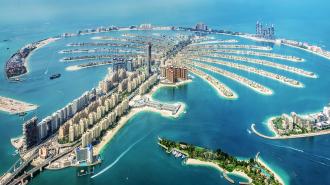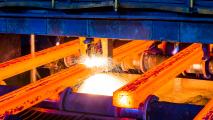For the first time, researchers have assessed the amount of land humans are adding to Earth’s coastlines and determined that we could fit 40 Manhattans in the space created in the last 20 years — a discovery that could have implications for our planet’s ecosystems and the future of cities.
Land reclamation: Earth’s coastlines are constantly changing due to natural processes like weather and water currents, but people can also reshape the coasts with “land reclamation” projects.
The purpose is to create more dry land from water or wetlands. This might be done by constructing a wall around a marsh and draining water from it, or by dumping a lot of sand, rock, dirt, etc. into shallow water until it rises above sea level.
In most cases, land reclamation is done because a city is running out of space for residents, commercial activities, and ports. The very high value of land in urban cores, like Manhattan, creates a strong incentive for creating more of it — Manhattan island itself has grown by thousands of acres since the city was founded, with many periodic proposals for further expansion.
In some instances, reclamation is done to increase a city’s prestige — Dubai’s artificially constructed Palm Islands are an example of the latter type of project.

Add it up: For a new study, published in the journal Earth’s Future, an international team of researchers analyzed satellite imagery of 135 coastals cities with populations of at least 1 million people.
By comparing images taken in 2000 to ones from 2020, they determined that 106 of the cities had added land to their coastlines, and when they added up all this new land, they found it amounted to 900 square miles.
Most of the added land was in developing countries, according to their analysis, with Shanghai alone adding 135 square miles. The most common reason for a deliberate land reclamation project was port expansion.
An estimated 70% of the new land was added to places at high risk of extreme sea level rise by 2100.
The big picture: No one had ever tracked land reclamation on a global level before this study, but the fact that more than 75% of the cities analyzed added at least some land since the turn of the century suggests that it is a global phenomenon.
“We expect that reclamation would continue to be popular in places that not only experience urban growth but also are eager to rebrand themselves for reputation and revenue,” the study’s authors write.
These initiatives can have a huge impact on the local ecosystem at land and sea, though, and the authors say 70% of the new land was added to places at high risk of extreme sea level rise by 2100 — meaning the land might be reclaimed by the sea in the future, if it’s not actively protected, for instance by sea walls and levies.
“The creation of land will make sense where it’s needed, but you have to do it in a responsible way.”
Robert Nicholls
Now that we know land reclamation is happening on such a large scale, it’s important that we not only monitor these projects more closely in the future than we have in the past, but also urge developers to carefully consider each project’s costs and benefits.
“Environmental consequences should be considered as part of the overall approval process,” said Robert Nicholls, a climate adaptation researcher from the University of East Anglia, who was not involved in the study.
“The creation of land will make sense where it’s needed, but you have to do it in a responsible way … and think about whether it is really needed,” he continued. “Those are value judgments.”
We’d love to hear from you! If you have a comment about this article or if you have a tip for a future Freethink story, please email us at [email protected].






